We often overlook the simple toilet, but it's key to human comfort and public health. Its story is a proof of human creativity, showing a journey from ancient customs to modern toilets. As we explore the history of the toilet, we see not just 'who invented the toilet,' but a shared story of its creation. The tale of the toilet isn't just about one person; it's about many people and inventions across time. While ancient times showed us early versions, the 19th century truly brought the modern toilet to life. Let’s dive into the development of toilets with HOROW, and explore the unknown history.
Early Sanitation Systems
The timeline of toilet evolution facts shows great steps in historical toilet creation from ancient times. It helps us see human creativity and the rise of sanitation systems. Key moments in early sanitation were turning points in how we live together. They led to the sewer systems and indoor plumbing we use today.
Ancient Civilizations and Their Sanitation Practices
Exploring the development of toilets offers a window into how ancient societies addressed their hygiene requirements; for instance, in the case of the Indu Valley and Ancient Rome showcasing aspects of their lives and technological progressions.
Indus Valley Civilization (2600–1900 BCE)
The Indus Valley had advanced toilets for its time. They made drainage systems for waterborne toilets. In cities like Harappa and Mohenjo-Daro, every house had a toilet linked to an efficient city-wide drainage network. This shows they cared about public health and hygiene early on.

Ancient Rome (Public Latrines and Aqueducts)
In 315 AD Rome had 144 restrooms to accommodate its increasing population. These facilities utilized water systems to flush waste into the rivers. The aqueduct system of Rome provided water enabling the operation of baths and lavatories indicating their emphasis, on hygiene and the welfare of their citizens.
The tales illustrate the ways ancient communities managed cleanliness and its impact, on health and urban living shedding light onto their sanitation techniques and toilet infrastructure, which have significantly influenced modern day sanitation practices.

Challenges Faced by Early Sanitation Systems
Modern toilets and sanitation systems faced big hurdles. Historical records show that early attempts at sanitation often led to diseases and pollution. This was mainly because of poor waste management and lack of cleanliness. These aspects are crucial in the story of sanitation history.
Ancient societies like the Egyptians and Greeks made progress in sanitation. But they didn’t fully understand how diseases spread. The Romans built big sewer systems but didn’t see the health risks from waste. They focused more on getting rid of waste than on health dangers.
The 19th century’s industrial boom led to crowded cities, making sanitation harder. London faced a huge problem in 1858, known as the 'Great Stink'. This event showed the need for better waste systems. It pushed for advancements in public health and led to the modern sewage systems we see today.
- In the Middle Ages, even with limited cleanliness, people knew the importance of washing hands near toilets.
- The Victorian era saw the start of using paper for hygiene, moving away from older methods. This showed progress in sanitation.
- The first patented porta potty in 1962 was a big innovation. It shows the ongoing development of modern toiletsfor better sanitation anywhere.
The path to modern sanitation was complex. It involved cultural practices, technology, and health efforts. Every step was key in creating today’s sanitation systems. It shows how past and present societies worked hard to solve sanitation problems.
The Evolution of Toilets
The evolution of toilets, over time reflects advancements in technology and societal norms illustrating the progression from traditional to facilities and shedding light on their impact, on public health and urban development.
The Chamber Pot
The chamber pot was simple but important in the history of toilets. Before modern plumbing, it was the go-to indoor option across Europe. Sadly, the way people got rid of waste led to health problems.

Public Toilets
In history shared public restrooms evolved from cramped areas, in towns to improved facilities. Early public toilets used by the Romans featured elongated seats over water marking an advancement, in sanitation and well being.

Early Flush Toilets
Sir John Harrington's flush toilet in 1596 was a big deal. It used water to move waste away. Though first for the wealthy, it began modern clean systems.
|
Feature |
Details |
Significance |
|
Ancient seats |
Egyptian sand-filled containers |
Early ways to handle waste, thrown into the Nile River |
|
Roman public toilets |
Running water and sponge sticks |
Made hygiene better and was a place to meet |
|
Harrington’s flush toilet |
7.5 gallons per flush |
Changed how we stay clean and deal with waste |
Through time, toilet innovation changed with what society needed and had. From simple toilets in the past to today's advanced designs. Exploring toilet history shows us tech progress and how we view cleanliness and health.
Cultural Shifts: The Impact of Toilet Evolution on Human History
Exploring the toilet development origins tells us not just about new tech. It also shows us how cultures have shifted. These changes have improved public health. They grew with the wider human sanitation evolution.
Showing people’s aesthetic changes and ingenuity
From simple holes in ancient Mesopotamia to today's fancy porcelain toilets, toilet evolution shows our cleverness and taste changing. The move from basic pits to beautiful toilets shows not just tech progress but also how we started to prioritize comfort and style in our bathrooms.
Change Social Attitudes towards Sanitation and Hygiene
Initially, toilets were just functional. Now, they are seen as important for public health. The first flushing toilet by Sir John Harington in 1596 and the S-trap by Alexander Cumming in 1775 were big steps in hygiene advancement. Ancient toilets in Rome were pretty advanced but still communal, which we wouldn't like today. This move to private, cleaner toilets shows a big change in how we see cleanliness and health.
The Role of Toilets in Public Health
Toilets play a role, in improving health by helping to prevent diseases that were prevalent in the past times. There is a connection between toilet facilities and reduced instances of diseases such as cholera, during the 19th century. This demonstrates how the invention of toilets has significantly influenced our well being and societal harmony as our lifespan expectancy.
|
Year |
Innovation |
Impact on Public Health |
|
2000 BC |
Minoan flushing toilet |
Reduced local contamination, enhancing community health |
|
1596 |
Harington's flush toilet |
Introduced the concept of flushing away waste, lowering disease transmission |
|
1957 |
Concentric-float fill valve |
Improved water efficiency, supporting sustainable water management |
|
21st Century |
Smart toilets |
Enhanced sanitary conditions with features like self-cleaning, promoting hygiene and health |
Key Inventors: Who Created the Toilet?
The tale of the originator of the toilet dates back centuries ago. Is intertwined with numerous innovators who revolutionized our perception and usage of bathrooms over time. Sir John Harington, along, with Alexander Cummings and Thomas Crapper played roles in shaping the evolution of toilets into what we recognize them as today.
Sir John Harington (1560–1612): Invention of the Flush Toilet and Its Impact
In 1596 Sir John Harington achieved a breakthrough by creating the flush toilet, for Queen Elizabeth I that managed odors and offered privacy features despite not gaining immediate widespread popularity; his innovation paved the way for further advancements, in sanitation practices.

Alexander Cummings (1755–1814): Creation of the S-Trap and Its Significance
Alexander Cummings made big improvements to the toilet. He's known for the inventor of flushing toilet upgrades. In 1775, he created the S-trap, keeping out sewer smells with standing water. This was key for making toilets cleaner and more pleasant, influencing many designs that followed.

Thomas Crapper (1836–1910): Contributions to Toilet Design and Popularization
Thomas Crapper is frequently misattributed as the inventor of the toilet; however he played a role, in popularizing flushing toilets by enhancing plumbing and employing effective marketing strategies.

|
Year |
Event |
Impact |
|
1836 |
Birth of Thomas Crapper in Thorne, South Yorkshire |
Marked the beginning of a significant life in sanitary engineering. |
|
1861 |
Foundation of Thomas Crapper's own plumbing business |
Set the stage for innovative changes in the industry. |
|
1880 |
Invention of the U-bend by Thomas Crapper |
Enhanced the S-trap to more effectively trap odors. |
|
1887 |
Crapper received a royal commission to supply plumbing for Sandringham House |
Significantly boosted his business reputation. |
|
1904 |
Crapper retires, passing the business to his nephew |
Ensured continuity of his pioneering work in plumbing. |
|
1910 |
The passing of Thomas Crapper |
Marks the legacy of significant advancements in sanitary technology. |
The innovators of the past have significantly influenced the development of the toilet systems that're in use today.Their contributions not enhanced toilet technology but encouraged open discussions, about advancements in bathroom facilities.Thanks, to their groundbreaking work the realm of bathroom innovation continues to progress.
Technological Advancements
Early toilets were basic in design, evolving remarkably over time. Today, we have toilets with advanced features. These changes show a significant shift towards comfort and eco-friendliness.
Changes in Materials and Design
Toilets originally started as stone and wood structures. They have evolved to be crafted from porcelain and premium plastic materials nowadays.That transition, towards designs reflects an emphasis not functionality but also aesthetics.

Modern Plumbing Systems
Modern toilets have highly efficient plumbing. They've improved from the basic S-trap to systems that save water. Features like dual flush and vacuum toilets exemplify this advancement.
Eco-Friendly and Smart Toilets
Eco-friendly toilets aim to reduce water use. They include features like dry toilets. Smart toilets add convenience with functions like auto flush and adjustable water settings.
Toilet technology has greatly improved our quality of life while protecting the environment. From simple pit latrines to advanced smart toilets, each step forward has been key. The future promises more eco-friendly innovations.
The Ongoing Importance of Smart Toilets in the 21st Century
In our time, automation and convenience are expected, even in home sanitation. Smart toilets have brought big changes. They turn our private moments into experiences full of comfort and cleanliness. The latest toilet technology has gone far past older inventions. Now, they offer features that mark a real revolution in toilet automation.
Automatic Lid Opening/Closing
An automated toilet seat that opens and closes could significantly assist individuals, with mobility or hand dexterity enhancing their bathroom experience and overall comfort level.
For this type of toilets, you can try HOROW T05 toilet. It has automatic opening and closing via auto or foot touch, which is easy to use with effortless operation.

Flexible Flushing Options
Smart toilets always have powerful flushing systems. For example, if you want to have flexible flushing options, you can choose HOROW T30 to enjoy the convenience of two flushing methods: a foot-kick for hands-free and a side knob for a more traditional, manual flush. These options provide ease of use, enhance hygiene, and cater to diverse preferences.

Flush Even Power Off
During a power emergency situation, you can still flush the toilet, if you choose a smart toilet with flushing function even power off. For example, HOROW T10 is a smart toilet with such function that you can’t miss!

Automatic Deodorizer
The self cleaning feature, in toilets decreases the need for maintenance tasks significantly; this is particularly beneficial, in dim lit or poorly ventilated bathrooms.
By eliminating smells it helps decrease respiratory irritation caused by the presence of harmful substances, in those odors thus safeguard the well being of household members.
HOROW T38 is a good choice for you to experience such automatic deodorization.

Self Cleaning Nozzle
The self cleaning nozzle helps prevent bacteria growth and lowers the chances of spreading infections, among family members sharing a bathroom space effectively suited for environments. This feature in toilets minimizes cleaning requirements and guarantees each rinse is done in a hygienic manner. Crucial, for delicate areas.
You can try self-cleaning nozzle of HOROW T15A to ensure cleanliness with water flow before and after each use. It also has automatic cleaning if not used for an extended period.

Round Bowl and Elongated Bowl
The compact design of toilet bowls makes them ideal, for bathrooms as they are generally more space efficient and complement traditional decor well with their smooth exterior that is easy to maintain and clean.
The elongated bowl provides added comfort with its cushion length making it a favorable choice, for adults seeking a design that complements contemporary home decor styles and offers enhanced support, for individuals of taller or broader build.
If you are interested about this design, you can try HOROW T37 with elongated bowl for added room and comfort.
Heated Seat
Smart toilet seats, with built in heating elements offer warmth thats particularly comforting during weather conditions This feature prevents muscle strain due to sitting on cold surfaces—a definite perk, for individuals dealing with hemorrhoids or circulation issues Some advanced models even come equipped with heated seats made of antimicrobial materials to promote cleanliness and inhibit the proliferation of bacteria and other germs.
For this function, you can explore HOROW T16A with adjustable heated seat. You can customize your comfort with its four temperature levels. The seat warms up upon sitting and conserves energy when not in use.

Dryer
Once you've finished washing up in the toilets embrace and feeling refreshed and cozy after using it thanks to the gentle drying process it offers with its warm air feature—it not only speeds up drying but also helps cut down on paper usage—it's, like a little extra touch of warmth and comfort, during the colder winter months that enhances your overall experience. Fortunately, HOROW T38 can help you experience a cozy, efficient drying process with integrated warm air feature for added comfort.

Adjustable Water Temperature
Intelligent toilets enable users to customize the water temperature, for cleaning based on their preferences and seasonal variations to ensure a cleaning experience. Beneficial, in colder weather as the warm water flow offers added comfort and effectively cleanses the skin compared to cold water.
People vary in their sensitivity, to water temperature and the water temperature feature in smart toilets caters to individuals of all ages. From kids to the elderly. For individuals, with hemorrhoids or sensitive skin conditions maintaining the water temperature can alleviate irritation. Offer a more soothing cleansing experience that aids in enhancing circulation and healing. For such experience, use HOROW T36 black smart toilet. It has six adjustable water temperatures for a special massage while you're on the toilet.

Intelligent Night Light
The smart nightlight, in bathrooms assists individuals in locating and utilizing toilets securely without needing to switch on the overhead light at nightfall or early morning hours for those with visual impairment or elderly individuals and young children alike. These nightlights offer added convenience by minimizing the chances of accidents due to visibility while visiting the bathroom in dim lit conditions.
It also help prevent disturbances to sleep patterns caused by harsh lighting. With their illumination designed to be easy on the eyes and not disrupt sleep cycles during nighttime bathroom visits these nightlights can also help you drift back, into slumber swiftly after attending to your nocturnal needs. Why not try HOROW T38 toilet? Its intelligent night light makes it easy to see and use in the dark.

ADA Compliant
Smart toilets are created following the guidelines outlined in the Americans, with Disabilities Act (ADA) making them accessible and user friendly for people with disabilities by featuring a raised seat height of 17 to 19 inches, for sitting and standing comfort.
HOROW T20YA can be your best choice. It is an ADA height toilet bidet combo with heated seat. It meets everyone’s individual needs for comfort with 4 level adjustable water temperature, water pressure and stainless steel nozzle position. Moreover, its drying function keeps proper air temperatures for child and ladies.

UV Sterilization
Some smart toilets like HOROW T05 have UV light, to sanitize the nozzle and surrounding areas. By this way they reduce bacteria and germs to improve hygiene and sanitation.

Multiple Washing Modes
Smart toilets come equipped with spray patterns and water pressure settings to cater to preferences, for cleansing purposes like front washes and rear washes with pulsating or oscillating water streams as options available, for selection. If you want smart toilets with multiple washing modes, HOROW T20 offers diverse washing modes tailored for different groups.

FAQ
1. Who invented the toilet?
Sir John Harington mentioned the flushing toilet first in 1596. Before that, the Indus Valley Civilization and Crete had early toilet systems.
2. What was the timeline of toilet invention and its development?
Important moments include the Indus Valley's sanitation, Rome's public latrines, and Harington's flush toilet in 1592. Cummings's S-trap came in 1775. Thomas Crapper improved toilet marketing in the 19th century. This led to modern toilet advancements.
3. What challenges did early sanitation systems face?
Early systems had trouble with waste disposal and sewerage treatment. This led to health problems and events like London's Great Stink in 1858.
4. How did cultural shifts impact the development of toilets?
Changes in hygiene and sanitation views influenced toilets. In Rome, public toilets were social spots. Victorian England's hygiene focus led to bathroom fixture promotions.
5. What features distinguish smart toilets?
Smart toilets offer features like auto lid opening, self-cleaning, and remote control. They also have heated seats, adjustable water temperature, and night lights.

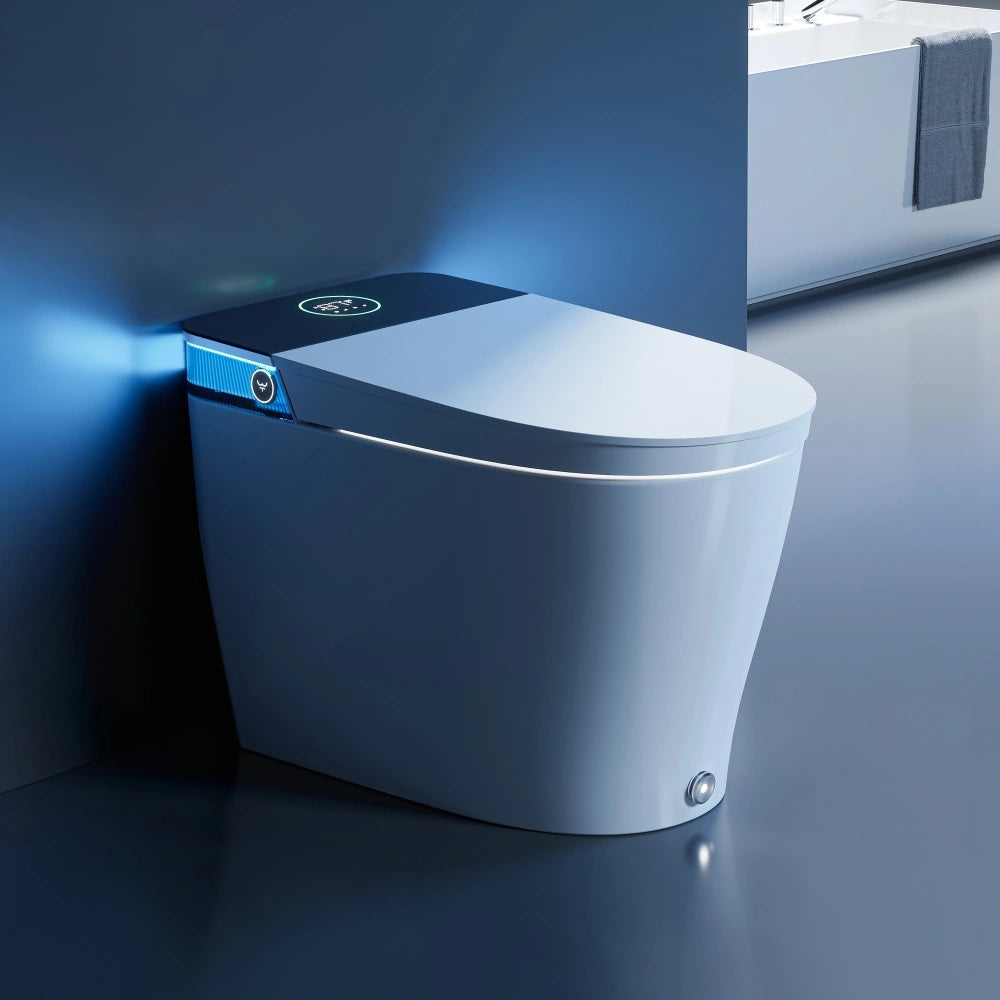
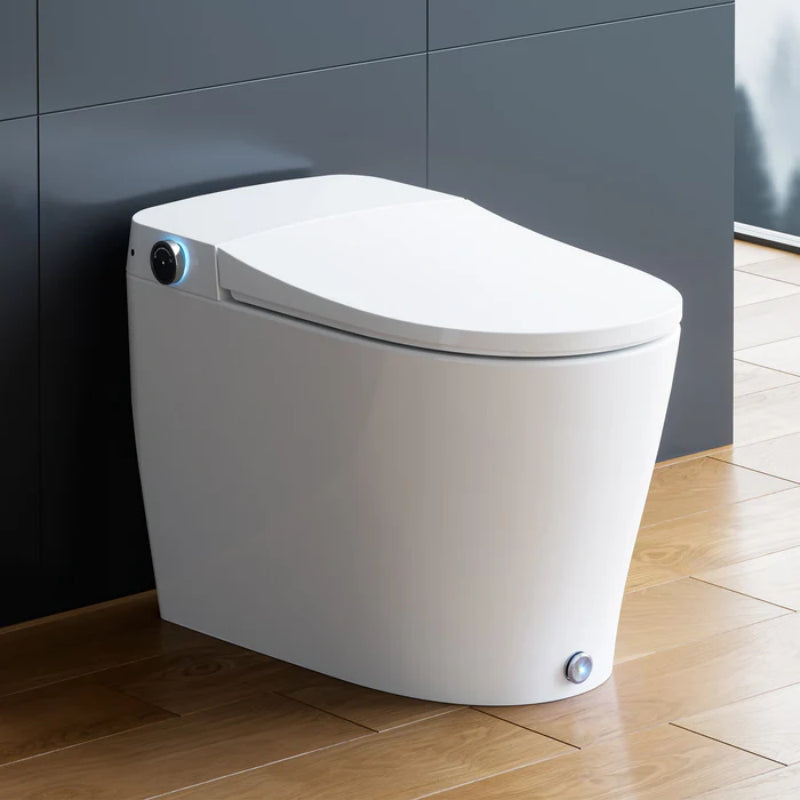
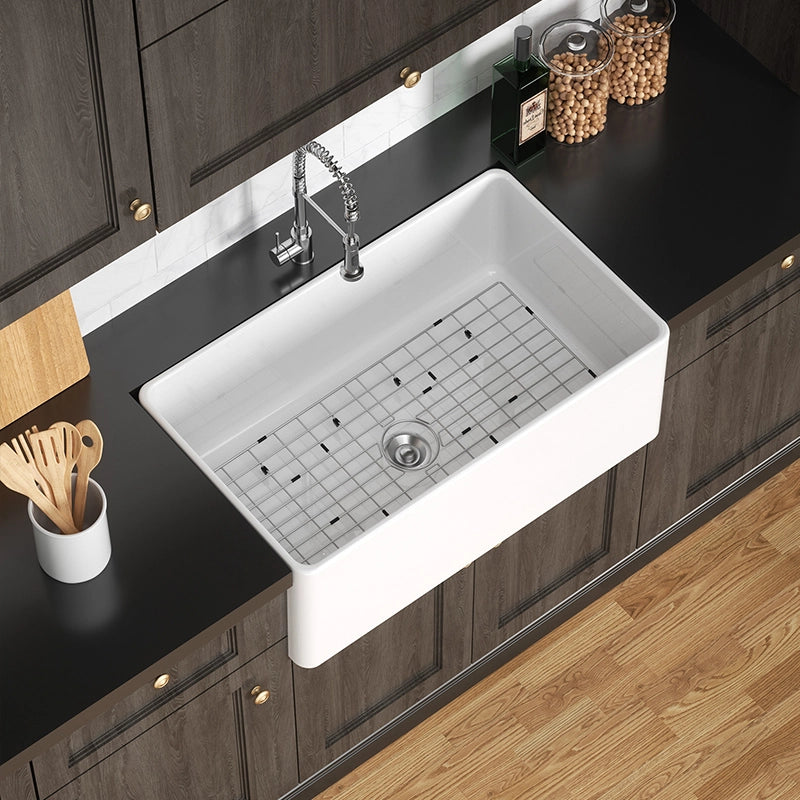
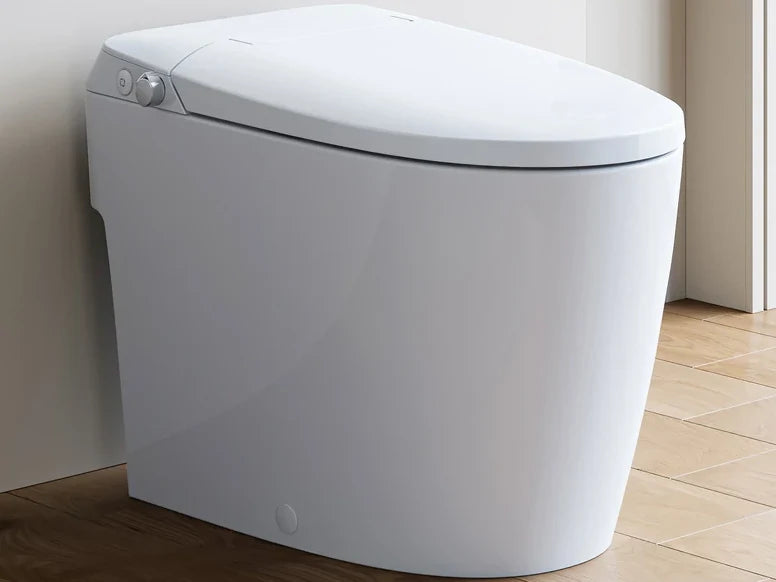
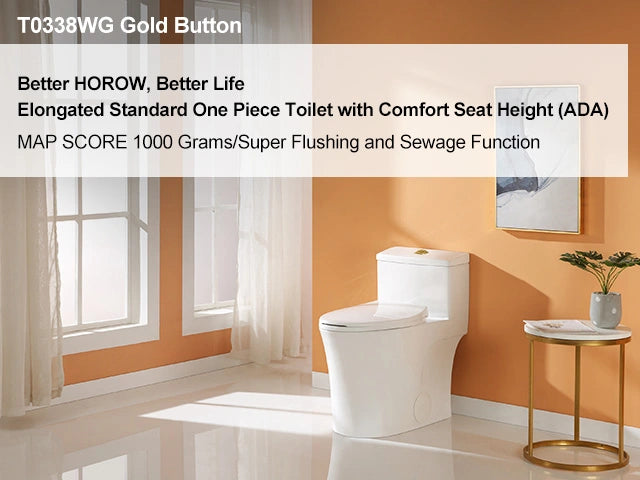
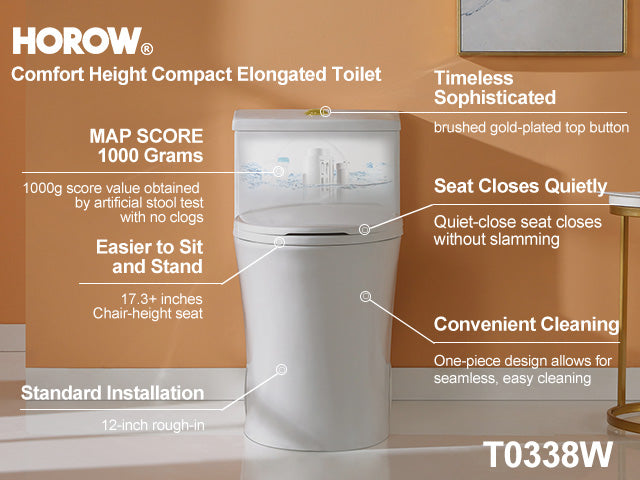

Leave a comment
This site is protected by hCaptcha and the hCaptcha Privacy Policy and Terms of Service apply.